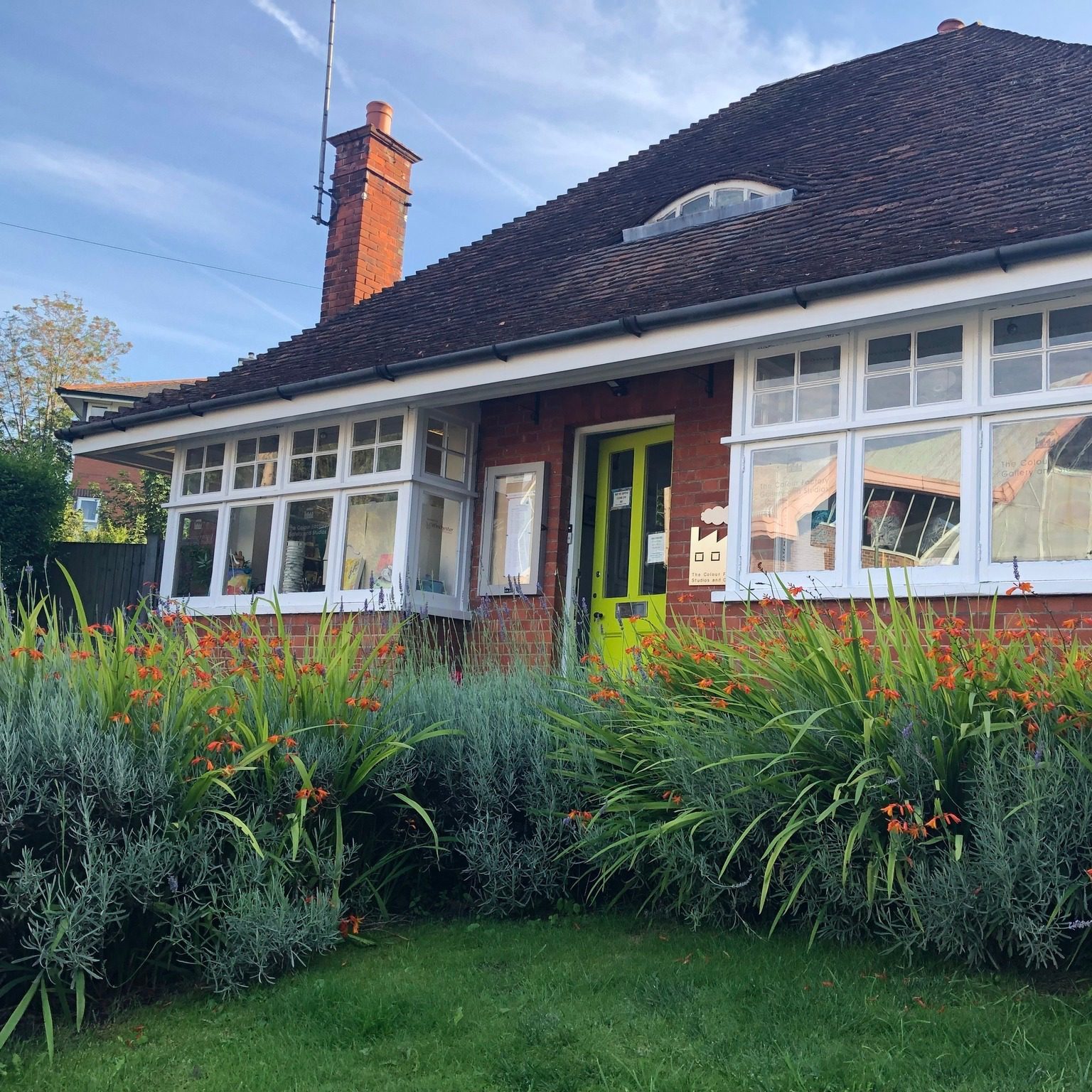The bollard project, first conceived in 2005 as part of the Hat Fair celebrations, is thought to have been a first for the UK, following in the footsteps of similar schemes in Australia, the USA and Europe. Winchester City Council funded the painting of a total of 16 bollards as part of its wider contribution to the refurbishment of The Square, in partnership with Hampshire County Council.
The team at The Colour Factory, which includes principal artists Jenny Muncaster and Rachael Alexander, took inspiration from some of the world’s greatest painters, adding an extra splash of artistic integrity, fun and intrigue to the city’s street furniture.
Julian Trevelyan
1910–1988 ‘The Absentee Pig’ (private sponsor)
Founding member of the British Surrealist Group and original participant of the Mass Observation project, spending a month in the industrial streets of Bolton, painting and creating collages from his suitcase full of materials. Embraced a wide variety of styles from surrealism to realism and abstraction. From 1956 he was Head of Printmaking at the Royal College of Art, where his students included David Hockney and Norman Ackroyd. For over 30 years he lived and worked at the Durham Wharf Studios on the banks of the River Thames at Hammersmith. He was married to artist Mary Fedden. ‘The Absentee Pig’ was discovered in 2005 in a storeroom at Chichester High School for Girls where it had hung for many years in the art room.

Joseph Mallord William Turner
1775 – 1851, The Fighting Temeraire, (sponsored by Farrow & Ball)
British romantic landscape painter, commonly known as ‘the painter of light’. Considered somewhat controversial in his day due to his abstract style of painting but now regarded to be one of the most influential landscape painters of all time.
Turner loved to paint nature in all her glory and was fascinated by the awe-inspiring power of the sea. He used broad washes of colour to depict the play of light on water and the radiance of skies and sunsets. He believed that light was an emanation of Gods spirit and this was why he concentrated on the themes of shimmering light and colour, and took a more spiritual approach to painting leaving out detailed distractions such as solid objects.
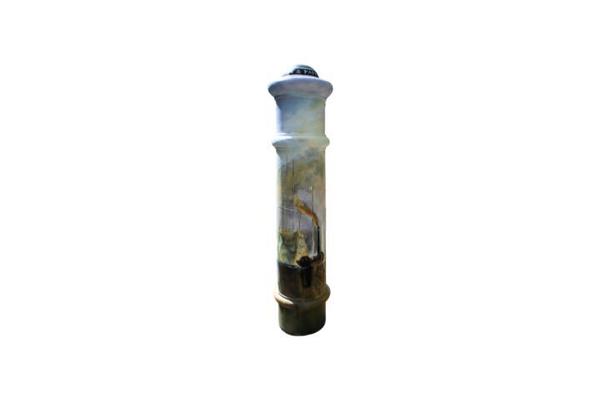
Henri Julien Felix Rousseau
1844 – 1910, The Sleeping Gypsy, (sponsored by The Black Hole)
French Post Impressionist painter in the Naïve or Primitive manner. Also known as Le Douanier (the customs officer) after his job collecting taxes in Paris. Ridiculed during his life by critics who regarded his style as flat or childish, he came to be recognised as a self- taught genius whose works are of high artistic quality. His best-known paintings depict jungle scenes, even though he never left France or saw a jungle. His inspiration came from illustrated books, displays of stuffed wild animals and the botanical gardens in Paris which he likened to exotic, dreamlike lands.
During his time in the army, he met soldiers and listened to their stories of subtropical Mexico which also provided inspiration. The Sleeping Gypsy painted in 1897 was one of his most famous paintings.

Sonia Delaunay
1885 -1979, Rhythm Colour, (sponsored by Winchester City Council & Hat Fair)
Jewish-French artist who, with her husband Robert Delaunay and others, co-founded the Orphism art movement, noted for its use of strong colours and geometric shapes. Her work included the concepts of geometric abstraction, the integration of furniture, fabrics, wall coverings, and clothing. She was the first living female artist to have a retrospective exhibition at the Louvre in 1964, and in 1975 was named an officer of the French Legion of Honour.

Raoul Dufy
1877 – 1953, Regatta at Cowes & Landscape at Villerville, (sponsored by Winchester City Council & Hat Fair)
French Fauvist painter. He developed a colourful, decorative style that became fashionable for designs of ceramics and textiles. He is noted for scenes of open-air social events. He was also a draftsman, printmaker, book illustrator, a theatrical set-dresser, a designer of furniture, and a planner of public spaces. His distinctive style saw compositions arranged with foreshortened perspective, and the use of thin washes of color applied quickly, in a manner that came to be known as stenographic. He died in 1953, and was buried near Matisse in Nice.

Henri de Toulouse-Lautrec
1864 –1901, Troupe de Eglantine, (sponsored by Cadogans)
Post Impressionist French painter, printmaker, draughtsman, and illustrator, whose immersion in the colourful and theatrical life of Paris yielded exciting, elegant and provocative images of the modern and sometimes decadent life of those times. Born into an aristocratic family, Henri's parents, the Comte and Comtesse, were first cousins (Henri's two grandmothers being sisters) and Henri suffered from a number of congenital health conditions traditionally attributed to inbreeding. One of the greatest painters of the Post-Impressionist period. In a 2005 auction at Christie's auction house a new record was set when ‘La Blanchisseuse’, an early painting of a young laundress, sold for $22.4 million U.S.

Joseph Albers
1888 – 1976, Treble Clef, (sponsored by Bang & Olufson)
German born American artist and educator. Painter, poet, sculptor, teacher, and theoretician of art, important as an innovator of such styles as Colour Field painting and Op art. Taught at Bauhaus with artists including Kandinsky and Paul Klee. Moved to USA 1933 after Bauhaus closed by nazis. Most famous for hundreds of paintings and drawings that make up the series Homage to the Square where issues of form, colour and space captured his curiosity and spirit of experimentation. Enjoyed the musical quality of visual experience.

René Magritte
1898 –1967, Golconde, (sponsored by Winchester City Council)
Belgian surrealist artist. He became well known for a number of witty and thought-provoking images. His work challenges observers' preconditioned perceptions of reality. His mother took her own life at the age of 40 and according to a legend, 13-year-old Magritte was present when her body was retrieved from the water. Supposedly, when his mother was found, her dress was covering her face, an image that has been suggested as the source of several of Magritte's paintings in 1927–1928 of people with cloth obscuring their faces, including Les Amants. During 1947–48, during Magritte's "Vache Period", he painted in a provocative and crude Fauve style. In Golconde, Magritte paints himself in endless repetition. In a trench coat and bowler cap, he becomes a symbol for "everyman", perhaps commenting on the anonymity of city life.
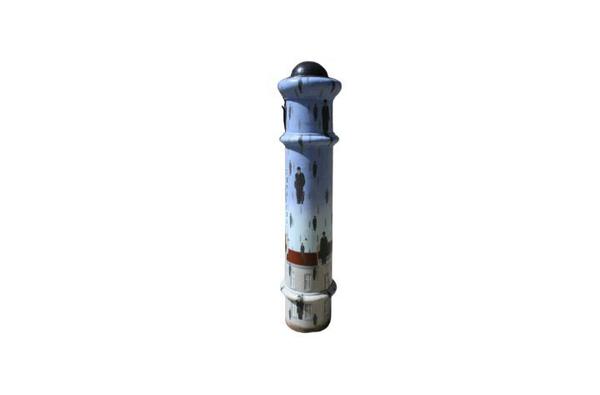
Paul Jackson Pollock
1912 –1956, Summertime NO9A, (sponsored by Winchester City Council)
American painter major figure in the Abstract Expressionist Movement. He was well known for his uniquely defined style of drip painting. A mostly reclusive artist with a volatile personality who enjoyed considerable fame and notoriety during his lifetime. In attempts to fight his alcoholism Pollock underwent Jungian psychotherapy, doctors engaged him through his art, encouraging Pollock made drawings, as a result, many Jungian concepts appear in his paintings. Recently it has been hypothesized that Pollock might have had bipolar disorder. He also moved away from the use of only the hand and wrist, since he used his whole body to paint. In 1956, Time magazine dubbed Pollock "Jack the Dripper" as a result of his unique painting style. Died at the age of 44.

Gustav Klimt
1862–1918, Fulfillment, (sponsored by Winchester City Council)
Austrian Symbolist painter and one of the most prominent members of the Vienna Secession movement. His major works include paintings, murals, sketches, and other art objects. Klimt's primary subject was the female body with a distinctive use of strong decorative elements and lustrous paintwork. Klimt travelled little but trips to Venice and Ravenna, both famous for their beautiful mosaics, most likely inspired his gold technique and his Byzantine imagery. As he worked and relaxed in his home, Klimt normally wore sandals and a long robe with no undergarments. Klimt's fame usually brought patrons to his door, and he could afford to be highly selective. His painting method was very deliberate and painstaking at times and he required lengthy sittings by his subjects. Though very active sexually, he kept his affairs discreet and he avoided personal scandal.

Henri Matisse
1869 -1954, Beasts of The Sea, (sponsored by Winchester City Council)
French artist, known for his use of colour and originality. He was a draughtsman, print-maker, and sculptor, but is known primarily as a painter. Also used paper cut outs to create simplified areas of strong pattern , pure colour and flat shapes. He first started to paint in 1889, after his mother brought him art supplies during a period of convalescence following an attack of appendicitis. He discovered "a kind of paradise" as he later described it and decided to become an artist, deeply disappointing his father. In 1951 Matisse finished a four-year project of designing the interior, the glass windows and the decorations of the Chapelle du Rosaire de Vence, often referred to as the Matisse Chapel. Matisse died of a heart attack at the age of 84 in 1954. He is interred in a cemetery near Nice next to Dufy.

David Hockney
Born 1937, A Bigger Splash, (sponsored by Winchester City Council)
English painter, draughtsman, printmaker, stage designer and photographer. Originally based in Bridlington, Yorkshire and Kensington London, he lived many years in the USA before returning to Yorkshire. Hockney was born with synesthesia, he sees synesthetic colours to musical stimuli. An important contributor to the Pop art movement of the 1960s, he is considered one of the most influential British artists of the twentieth century. The Royal Academy show ‘A Bigger Picture' in 2012 included 150 works by the artist, many of which took entire walls in the gallery's brightly lit rooms, dedicated to landscapes, especially trees, including tree tunnels. Works include oil paintings and watercolors inspired by Hockney's native Yorkshire. Around 50 drawings were created on an iPad and then printed on paper for the exhibition. Many of Hockney's works are now housed in Salts Mill, in Saltaire, near his home town of Bradford.

Oscar-Claude Monet
1840 – 1926, Water Lilies, (sponsored by Winchester BID)
French painter, founder, leader, and unswerving advocate of the Impressionist style. During his long career, he was the most consistent and prolific practitioner of impressionism especially when applied to plein air (outdoor) landscape painting. The term "Impressionism" is derived from the title of his painting Impression, soleil levant. Monet's ambition to document the French countryside led to a method of painting the same scene many times so as to capture the changing of light and the passing of the seasons. Frequently exhibited and successful during his lifetime, Monet's fame and popularity soared in the second half of the 20th century when he became one of the world's most famous painters and a source of inspiration for other artists. His works also travelled the world in museum exhibitions that attracted record-breaking crowds and marketed popular commercial items featuring imagery from his art.

Wassily Kandinsky
1866 –1944, Last Judgment, (sponsored by Dutton Gregory)
Influential Russian painter and art theorist. Credited with painting the first purely-abstract works. Studied law and economics before he began painting. At the age of 30, Kandinsky gave up a promising career teaching law and economics to enroll in art school in Munich. He was not immediately granted admission and began learning art on his own. He first likened painting to composing music in the manner for which he would become noted. Taught at the Bauhaus school of art and architecture from 1922 until the Nazis closed it in 1933. He then moved to France where he lived the rest of his life.
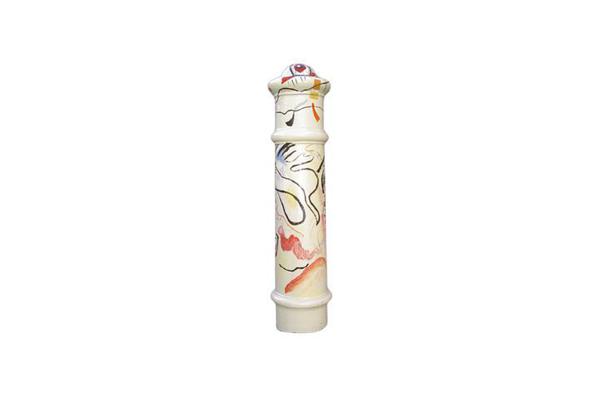
Clarice Cliff
1899 – 1972, Fantasque, Crocus and Red Gardenia, (private sponsor)
Trail blazing British designer and ceramicist whose fame and success as a ‘career woman’ and the publicity she received in the 1930s was unprecedented. Started working in Stoke ‘Potteries’ at 13, working as a gilder, adding gold lines to traditional ceramics. She was given defective ‘whiteware’ to use, to explore her own ideas on. Using bright enamel colours in simple patterns of triangles, she developed her ‘Bizarre Ware’ style, launched in 1927. By 1929 Clarice had a team of around 70 young decorators working for her, nearly all women who were known as the ‘Bizarre Girls’. Between 1932 – 1934 she was art director for a major project called ‘Artists in Industry’ directing artists such as Paul Nash, Barbara Hepworth, Vanessa Bell and Duncan Grant. The project ‘Modern Art for the Table’ was launched at Harrods.

Katsushika Hokusai
1760 – 1849, Mount Fuji, (sponsored by Mawson & Co)
Japanese artist, painter and printmaker of the Edo period. Hokusai is best known as author of the woodblock print series Thirty-six Views of Mount Fuji which includes the internationally recognized print, The Great Wave off Kanagawa, created during the 1820s. The first book of Hokusai's manga, sketches or caricatures that influenced the modern form of comics known by the same name, was published in 1814. Together, his 12 volumes of manga published before 1820 and three more published posthumously include thousands of drawings of animals, religious figures, and everyday people. They often have humorous overtones and were very popular at the time. The next period, beginning in 1834, saw Hokusai working under the name "Gakyō Rōjin Manji" (The Old Man Mad About Art).
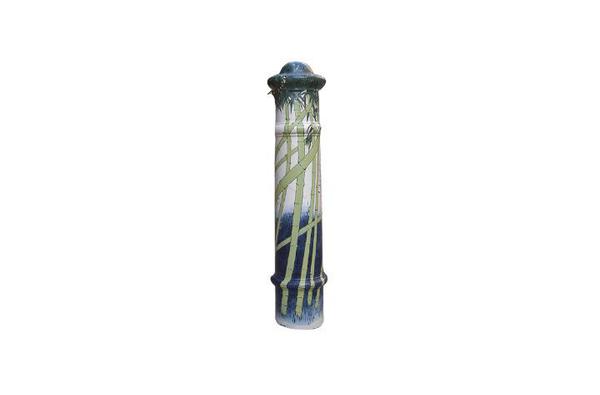
Bridget Riley
Born 1931, (private sponsor)
English painter who is one of the foremost proponents of Op art. Educated at Cheltenham Ladies' College. She studied first at Goldsmiths College (1949–52), and later at the Royal College of Art (1952–55). Around 1960 she began to develop her signature Op Art style consisting of black and white geometric patterns that explore the dynamism of sight and produce a disorienting effect on the eye. It was during this time that Riley began to paint the black and white works for which she is well known. They present a great variety of geometric forms that produce sensations of movement or colour. In the early 1960s, her works were said to induce sensations in viewers as varied as seasickness and sky diving.
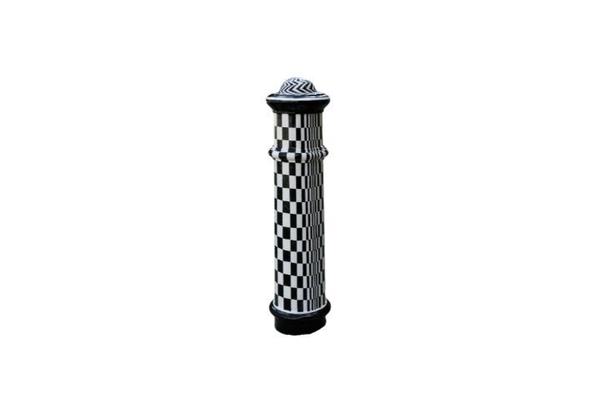
Jean-Michel Basquiat
1960 –1988, (sponsored by Seen Agency)
American artist who rose to success during the 1980s as part of the Neo-expressionism movement. Still considered a ground breaking artist in this field. Basquiat first achieved notoriety in the late 1970s as part of the graffiti duo SAMO, alongside friend Al Diaz, writing enigmatic epigrams all over Manhattan, particularly in the cultural hotbed of the Lower East Side where rap, punk, and street art coalesced into early hip-hop culture. He combined poetry, drawing, and painting, text and image, abstraction, figuration, and historical information mixed with contemporary critique. A young black artist, he used his artwork to deal with themes of racism, classism, colonialism, and other power structures and their effects on U.S society. By the early 1980s, his paintings were being exhibited in galleries and museums internationally. Died at the age of 27 of a heroin overdose.

Georgia O'Keeffe
1887 – 1986, Grapes on a Plate, (sponsored by Winchester BID)
One of the most significant artists of the 20th Century, renowned for her contribution to modern art, and who was known as the ‘Mother of American Modernism’. She was an American modernist painter and draftswoman whose career spanned seven decades. Gaining international recognition for her meticulous paintings of natural forms, particularly flowers, she consistently battled against the Freudian interpretations of her flower series. Flower paintings make up a small percentage of her work, she also drew the places and environments in which she lived, such as her desert inspired landscapes and paintings of New York skyscrapers. In the 1950s she began to travel internationally, sketching and painting the places she visited, the mountain peaks of Peru, and Japan’s Mount Fuji. At the age of seventy-three she started painting aerial views of clouds and sky.

Leonardo da Vinci
1452 –1519, Mona Lisa, (sponsored by Winchester BID)
Italian Renaissance polymath: painter, sculptor, architect, musician, scientist, mathematician, engineer, inventor, anatomist, geologist, cartographer, botanist, and writer. He is widely considered to be one of the greatest painters of all time and perhaps the most diversely talented person ever to have lived. Leonardo was and is renowned primarily as a painter. Among his works, the Mona Lisa is the most famous and most parodied portrait and The Last Supper the most reproduced religious painting of all time. The shadowy quality for which the work is renowned came to be called "sfumato" or Leonardo's smoke.

Ravenna Mosaics
(private sponsor)
Central Italian city of Ravenna with superb Byzantine mosaics. A thriving seaport in ancient times which rose to power in the 1st century BC under the Emperor Augustus. The domes of its Byzantine churches still evoke its Eastern heritage. Ravenna's early Christian churches and mosaics have been collectively designated a World Heritage Site.
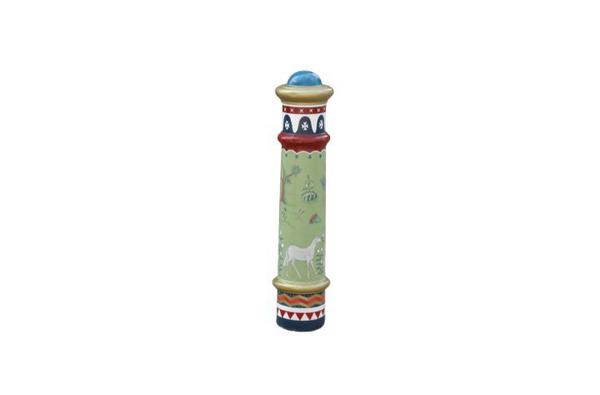
Sir Peter Thomas Blake
Born 1932, (adopted by Winchester City Council)
English pop artist, best known for his record sleeve design for The Beatles' album Sgt. Pepper’s Lonely Hearts Club Band. During the late 1950s, Blake became one of the best-known British pop artists. His paintings from this time included imagery from advertisements, music hall entertainment, and wrestlers, often including collaged elements. He first came to wider public attention when he was featured in Ken Russell's film on pop art, Pop Goes the Easel, which was broadcast on BBC television in 1962. Along with album covers for bands such as The Who and Paul Weller, Blake is also famous for his assemblages and collages of found objects. Blake became a Royal Academician in 1981, received a CBE in 1983 and in 2002 Blake received a knighthood for his services to art.

James Abbott McNeill Whistler
1834 –1903, Arrangement in Grey and Black No. 1, (sponsored by The Colour Factory)
American painter based primarily in the United Kingdom. He avoided sentimentality in painting. He saw black as being the colour to create harmony and usually painted in grey and black tones. He found a parallel between painting and music, and entitled many of his paintings "arrangements", "harmonies", and "nocturnes". His most famous painting, Arrangement in Grey and Black No. 1 (1871), commonly known as 'Whistler's Mother', or 'Portrait of Artist's Mother' is a revered and often parodied portrait of motherhood. The subject of the painting is Whistler's mother, Anna McNeill Whistler. Bought by the French state in 1891 and is in the Musée d'Orsay in Paris. Whistler influenced the art world and the broader culture of his time with his theories and his friendships with other leading artists and writers.

Diamond Jubilee
Richard Moss House, (sponsored by Winchester City Council)
Celebrating Queen Elizabeth II Diamond Jubilee. Design based on the memories of the residents of Richard moss House, Winchester.
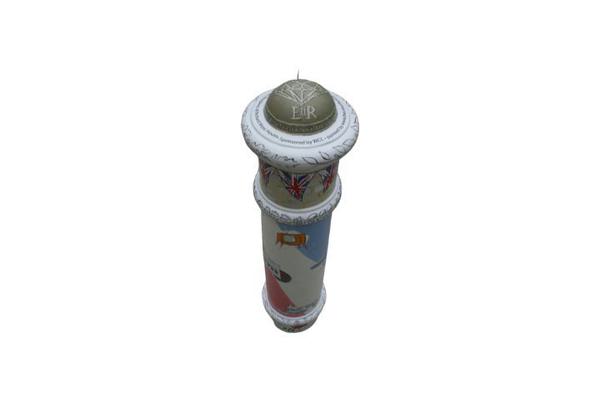
Roman Winchester
Carroll Youth Centre, (sponsored by Winchester City Council)
Bollard design based on drawings produced by children from the Carroll Youth Centre, during workshops where they looked at Roman objects brought along by Winchester Museum Services.
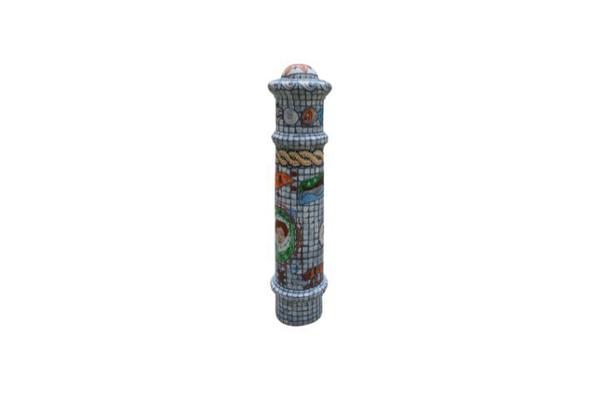
Olympics
Winchester and District Young Carers, (sponsored by Winchester City Council)
Art workshops working with Winchester and District Young Carers, taking their artwork and creating a bollard design to celebrate the 2012 Olympic Games in London.
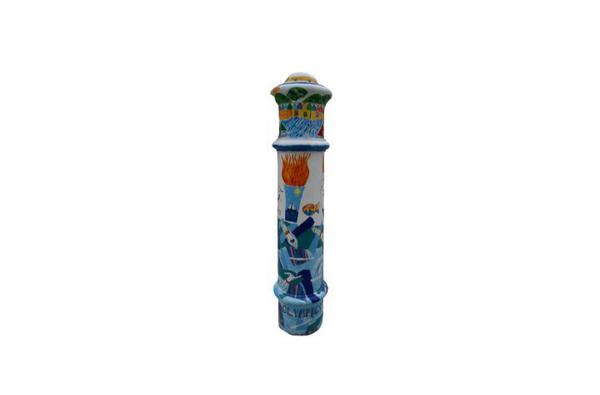
Magdalena Carmen Frida Kahlo y Calderón
1907 –1954, The Frame, (sponsored by Winchester BID)
Mexican artist Frida Kahlo remembered for her self-portraits, pain and passion, and bold, vibrant colours. Inspired by the nature and artifacts of Mexico and the country's popular culture she employed a naïve folk-art style to explore questions of identity, postcolonialism, gender, class, and race in Mexican society. Her paintings often had strong autobiographical elements and mixed realism with fantasy. She is known for painting about her experience of chronic pain. Kahlo, who suffered from polio as a child, nearly died in a bus accident as a teenager. She suffered multiple fractures of her spine, collarbone and ribs, a shattered pelvis, broken foot and a dislocated shoulder. She began to focus heavily on painting while recovering in a body cast. In her lifetime, she had 30 operations.

Pablo Picasso
1881 – 1973, Nature Morte, (sponsored by Winchester BID)
Pablo Diego José Francisco de Paula Juan Nepomuceno María de los Remedios Cipriano de la Santísima Trinidad Ruiz y Picasso, known as Pablo Picasso. Picasso demonstrated extraordinary artistic talent in his early years, painting in a realistic manner through his childhood and adolescence. During the first decade of the 20th century his style changed as he experimented with different theories, techniques, and ideas. His revolutionary artistic accomplishments brought him universal renown and immense fortune, making him one of the best-known figures in 20th century art. Throughout his life Picasso maintained a number of mistresses in addition to his wife or primary partner. Picasso was married twice and had four children by three women.

Vincent Willem van Gogh
1853 –1890, Vase with Fifteen Sunflowers, (sponsored by Winchester BID)
Dutch Post-Impressionist painter who after his death became one of the most famous and influential figures in Western art history. Painted seven different versions of Sunflowers in a Vase, this one Vase with Fifteen Sunflowers sold in March 1987 for £24.75 million. In a decade, he created about 2,100 artworks, including around 860 oil paintings, most of which date from the last two years of his life. They are characterised by bold colours and dramatic, impulsive and expressive brushwork that contributed to the foundations of modern art. In 1886, he moved to Paris where he met members of the avant-garde, including Émile Bernard and Paul Gauguin, who were reacting against the Impressionist sensibility. His paintings grew brighter as he developed a style that became fully realised during his stay in Arles in the South of France in 1888.

Marc Chagall
1887 –1985, The Blue Circus, sponsored by Winchester BID)
Russian-French artist described as "the quintessential Jewish artist of the twentieth century" and a pioneer of modernism. An early modernist, he was associated with several major artistic styles and created works in a wide range of artistic formats, including painting, drawings, book illustrations, stained glass, stage sets, ceramics, tapestries and fine art prints. He created his own mixture and style of modern art based on his idea of Eastern Europe and Jewish folk culture. He spent the wartime years in Belarus, becoming one of the country's most distinguished artists and a member of the modernist avant-garde, before leaving again for Paris in 1923. He also produced stained glass windows for the cathedrals of Reims and Metz as well as the Fraumünster in Zürich, windows for the UN and the Art Institute of Chicago and the Jerusalem Windows in Israel. He also did large-scale paintings, including part of the ceiling of the Paris Opéra.
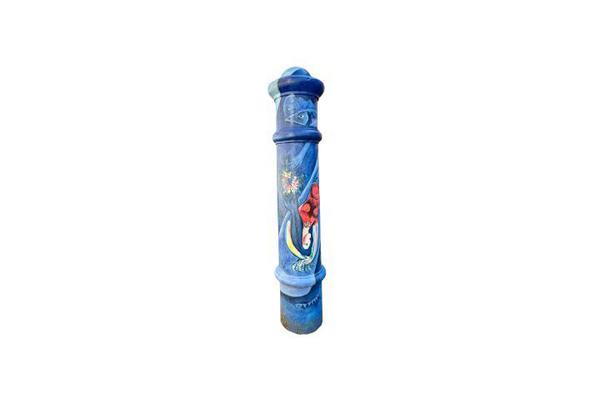
Commissioned by Hampshire and The Isle of Wight Wildlife Trust to form part of The Water Vole Trail.
These seven bollards are designed around the River Itchen, featuring patterns found in water, and some of the creatures and plants that live there, including trout, water crowfoot and the mayfly.


